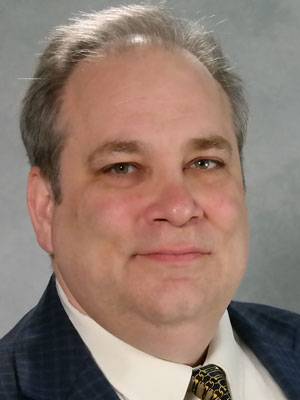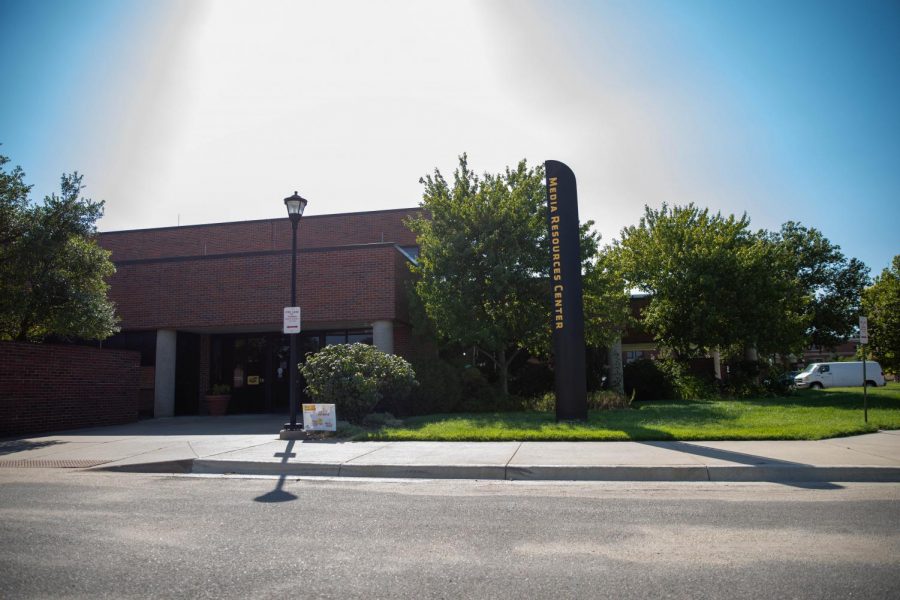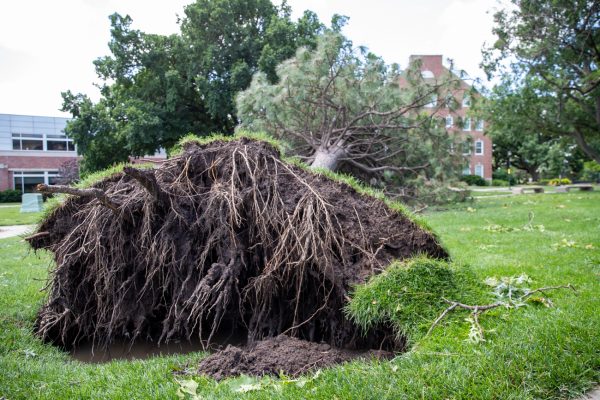Media resources center: The hidden hero for faculty during COVID-19
The media resources center
Transitioning to fully online during COVID-19 was a struggle for everyone — professors had to modify their courses and students had to try their best to keep up with the changes.
Behind all of that, the Media Resources Center had been preparing for this moment without even realizing it.
John Jones, director of MRC, said that they operate at the intersection of technology and instruction, but it doesn’t represent everything that they do.
“When things are going well, we are invisible,” Jones said. “We should be aspiring to be invisible, when the faculty have everything that they need and everything works, then we fade into the background.”
Jones said that MRC started preparing in early March for the transition online.
“We sat there, we looked at the way things were going and saw the trajectory, and we were like, ‘we need to be preparing so that we are ready,’” Jones said. “A couple of weeks later, we went fully online.
“Provost Muma said, ‘are you guys going to be ready to handle this’, and I could say, ‘Ya, look what we built.’”
The MRC is made up of five different departments that handle different responsibilities on campus.
Campus media services is in charge of the technology in classrooms with the exception of computers, which includes projectors, screens, podiums, cameras, and microphones. They also help with live events on campus and turning spaces into presentation spaces. The campus media services team has seven employed staff members along with several students.

The office of instructional resources team provides support to professors with teaching online. Many resources for professors are readily available online at wichita.edu/services/mrc.
“Pre-COVID, about 10-20 percent of instructors had some experience teaching online,” Jones said. “When we had to transition to fully online, we had a lot of people to get up to speed.”
The team’s big effort is running the academic resources conference, which happens three times a year. Jones said that 200 faculty members come through and do at least one session, with sessions happening over four or five days.
“We were very very lucky that for years we had been working in an effort to try and build capacity and understanding and interest in teaching online,” Jones said.
The WSUtv and video services team helps with live events on campus, such as Commencement. They also have relationships with certain sport teams on campus to record their events. The web services team works with web development and Strat-comm to provide the main university website.
The newest team is academic access and accommodations, and their primary role is producing braille and tactile graphics for students with visual impairments.
“It’s sort of a social justice thing that is happening over time,” Jones said.
Jones said that MRC encourages professors to use certain avenues to teach their classes, including Blackboard, Panopto, and Zoom. While publisher materials may add to a course, it is common to run into accessibility issues for students taking courses using their content.
“We have a web page where we list the publisher resources that have been reviewed and whether they are approved or have an exception to be used in a particular class, and publishers hate that,” Jones said.
One of the concerns introduced was “zoom bombing,” where outside parties enter a zoom because they got ahold of the zoom login information.
Corcoran said that prior to COVID-19, there were less than 250 Zoom users on campus. In the transition week to online, that number became 2,500 licensed users.
“We didn’t decide to move away from Zoom, but we did leverage Ryan’s team to try and provide support for folks,” Jones said. “We very quickly put together a program of Zoom co-hosts that people could request so that if they were teaching in a Zoom space or doing a meeting in a zoom space, there could be somebody who would be a sort of wingman and watch what was going on in the room … so that the instructors who were in a space where they were not comfortable, could rely on somebody else.”
With federal funding, the MRC is also now able to remotely access and help professors in classrooms with technology. Corcoran said that a majority of the time, it is a simple fix and having this tool gives them the ability to support all master classrooms remotely.
“We want people to be excited about those new capacities in master classrooms and what they can do,” Jones said.
They have also purchased several lightboards that are spread out everywhere on campus, including one in the library for students to use. The lightboards allow professors to take notes and show presentations without turning their backs and makes recorded lectures more interesting and dynamic. Go to wichita.edu/lightboards to sign up for a time to use the one in the library.
Jones said that the MRC is important to campus because of the continuity of experience they help provide.
“There are much more important things to learn than technology,” Jones said. “By standardizing and managing what we use in those environments, we can reduce that cognitive load and make the experience better for everyone.”
Jones said that being forced to switch online last year might’ve been hard, but it has now opened up different avenues of teaching for many professors.
“Being forced to meet like this or teach like this during COVID has now enabled them post-COVID to go, ‘Oh, that wasn’t really that hard, I don’t know why I was waiting so long,’ … they will now have more experience and comfort with the online tools … That only serves to benefit everybody I think.”

Julia Nightengale was a third-year reporter for The Sunflower, previously working as a Copy Editor and News Editor. Nightengale is a graduate student working...










CELINE LESNER • Sep 1, 2021 at 2:58 pm
GET YOUR EX LOVER BACK OR YOUR BROKEN RELATIONSHIP OR MARRIAGE RESTORED BACK.
Greatest things I have ever experienced in my life and my broken marriage. and I saw a wonderful testimony of Lisa on a psychic page about the good works of Dr Omokpo. I never believed it, because I have never heard anything about such a miracle before. Nobody would have been able to convince me about it not until [email protected] did a marvelous work for me that restored my broken marriage by getting my husband back to me and leaving the other woman he wanted to marry. as his new wife after fixing their wedding date. I was truly shocked when my husband knelt down pleading for forgiveness for me to accept him back. I am really short of words to use to show my appreciation to Dr Omokpo For his a God sent to me and my Entire family for divine restoration of my marriage. Contact him now for any kind of help via email: [email protected]